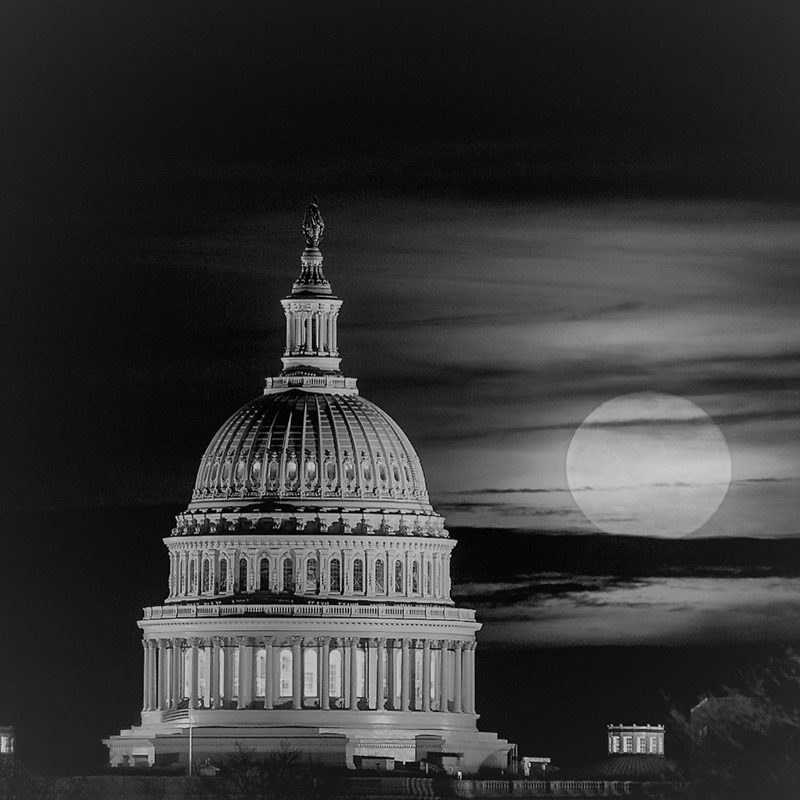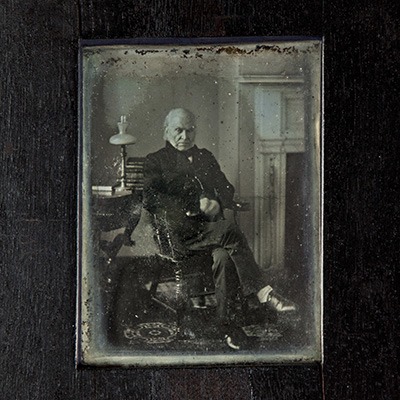The spirits of democracy might not be the only spirits that reside in the halls of the Capitol. Since the beginning of its construction in the late 18th century, Spooky stories remain central to the building’s history. In October 1898, the Philadelphia Press even referred to the Capitol as “the most thoroughly haunted building in the world.” With Halloween right around the corner, let’s explore the reasons this might be true and delve into the Capitol’s ghost stories, both of the friendly and not-so-friendly variety.

The Capitol building itself is said to be cursed by a man named John Lenthall, who worked for architect Benjamin Latrobe when the building was first constructed. Lenthall worked on building an arch using a design that he was unfamiliar with. When he removed the wooden supports, he expected the arch to be complete. But instead, it collapsed and killed him. Legend says that with his dying breath, he cursed the Capitol. To this day, the curse might still remain and be the reason behind other horrors that took place in the building’s history—perhaps even explaining the gridlock in Congress.

One of the most well-known and oft-repeated Capitol ghost stories is that of the Demon Cat. Stories about the Cat date back to at least 1862, when Union soldiers were temporarily housed in the Capitol building. Night watchmen claimed that there was a black cat who could grow to unworldly proportions before it pounced on its victim. Physical evidence of the Demon Cat might even exist in the paw prints that are visible today on the Capitol floor, as well as the initials, “DC,” scratched into the ground. The Demon Cat reportedly appeared before national tragedies, such as Abrahams Lincoln’s assassination in 1865, the Stock Market crash in 1929, and John F. Kennedy’s assassination in 1963.

One gruesome tale of the Capitol can be told by the blood-stained stairs on which a murder took place. In 1886, Congressman William Taulbee was accused by journalist Charles Kinkaid of using his time in Washington, D.C. to have an affair with a young woman. The story tarnished Taulbee’s reputation and led him not to run for reelection. Instead, he stayed in D.C. as a lobbyist and often spent time at the Capitol, where he frequently had tumultuous run-ins with Kinkaid, who still covered Congress. In 1890, they again crossed paths. And though accounts vary as to what exactly occurred, there seems to be agreement that name-calling and a physical altercation were involved. It was then that Kinkaid walked away, came back to the Capitol armed, and shot Taulbee in the head. Days later, he was dead. More than 130 years later, the blood of Taulbee is still visible on the marble steps of the stairs he was shot. Kinkaid was acquitted on the claim of self-defense. But legend says that as revenge, Taulbee’s ghost trips reporters who deign to walk up those very steps.

Whether or not you believe in curses or ghosts, these spooky stories offer an interesting way to look into the past. The Capitol is not just another old building or strictly a place of political history. Within its halls were real people who lived, died, and perhaps, something in between. Though the Capitol remains closed, it will in time reopen to the public. Next time you visit, take the time to contemplate the presence—and legacy—of those who once walked the halls of the “People’s House,” and those who may yet still be wandering from a ghostly realm.
Want to learn more about these and other Capitol ghost stories? Watch the U.S. Capitol Historical Society “Ghost Stories” webinar featuring our Chief Tour Guide, Steve Livengood, who also discusses the legends of haunted and deadly bathtubs and of statues that move. The program that aired on C-SPAN can be watched here.
Written by guest contributor Kate Ashman, a senior at Brigham Young University majoring in American Studies. Edited by U.S. Capitol Historical Society staff.
Sources:
Capitol Hill Haunts, Tim Krepp
https://www.youtube.com/watch?v=Ek3cRffrd98&t=443s
https://www.atlasobscura.com/articles/is-there-a-demon-cat-in-the-us-capitol
https://history.house.gov/Blog/2019/October/10-29-Haunting-Debunked/
https://history.house.gov/Blog/2019/February/2-26_JQA_lasthours/
https://www.aoc.gov/explore-capitol-campus/blog/haunted-halls-congress-5-creepy-capitol-legends




